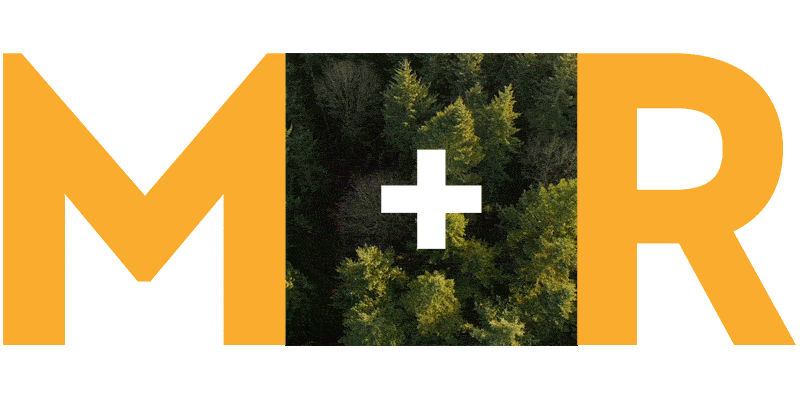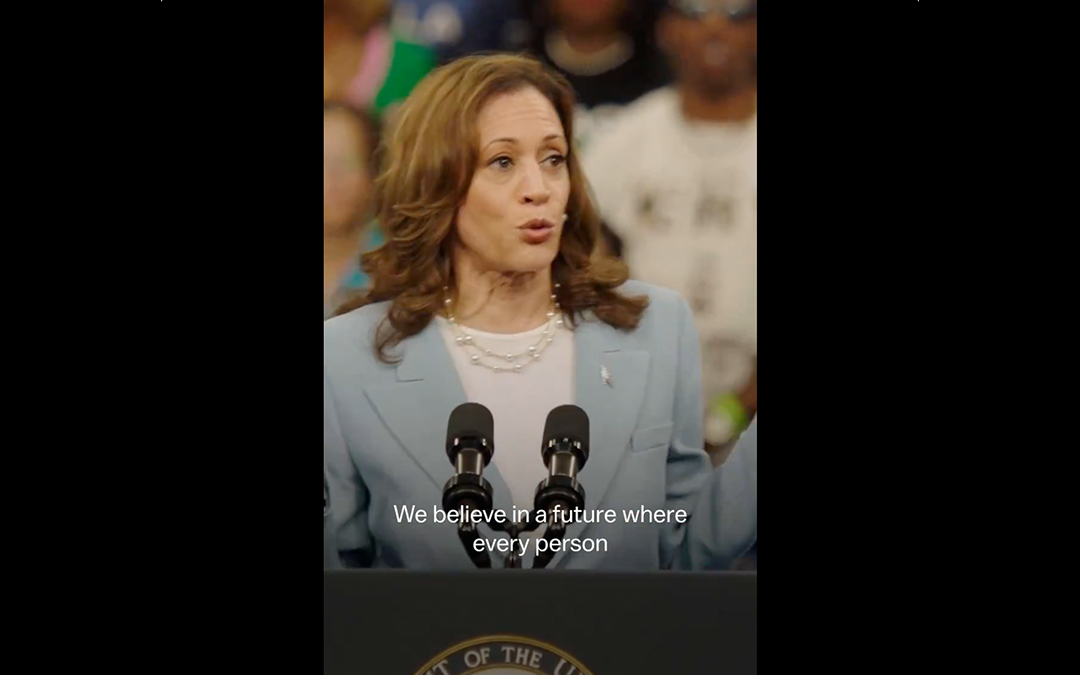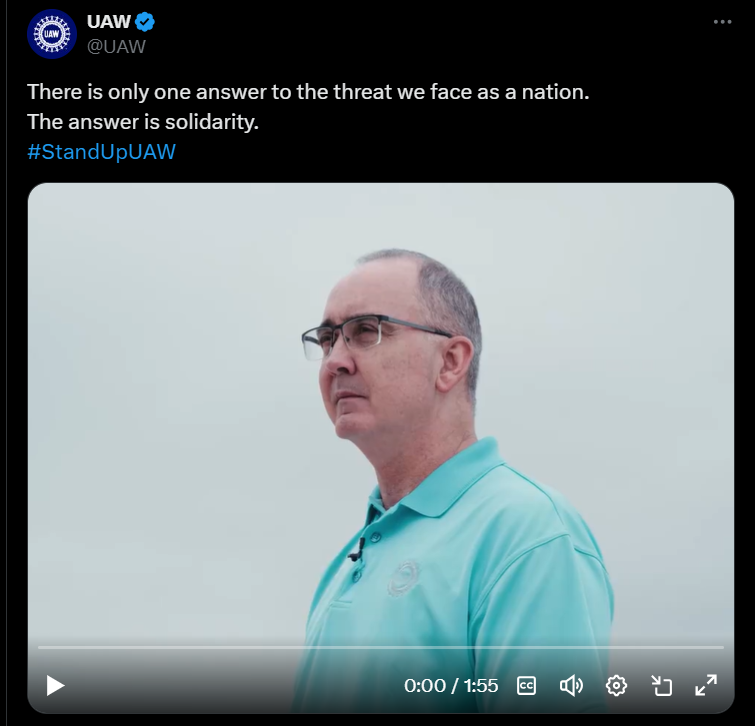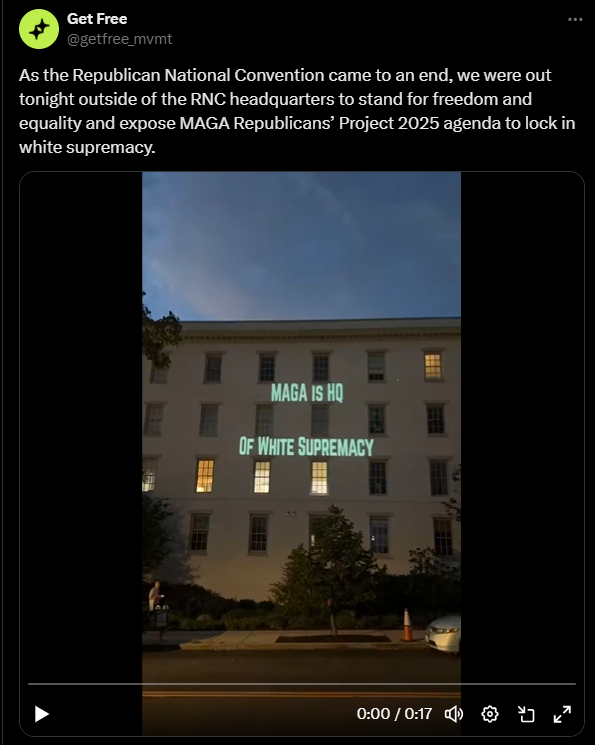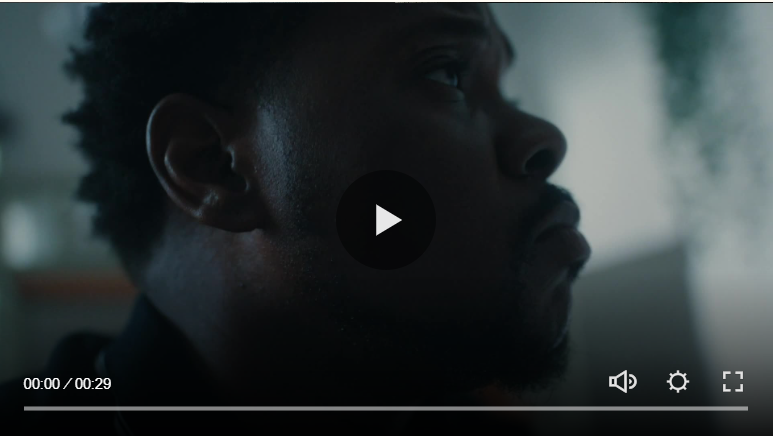Ever notice how some political campaigns, nonprofits, and advocacy movements just seem to get it? It’s no accident — it’s the work of creative directors, message testers, designers, researchers, project managers, and the entire battalion of people in the progressive movement whose job is to make smart creative that connects with people. With a massively important presidential election and so much on the line this year, the past couple months have yielded so. Much. Content. Luckily for you, we are big fans of Content™ — just ask everyone in #creativebits, our internal Slack channel dedicated to ooh-ing and aah-ing over our favorite creative we’ve worked on or seen out in the wild. We’ve waded through the good, the bad, and the meh to share this batch of electoral creative we’re feeling especially inspired by.
The Best of Best Practices
Whether you’re talking about candidates or issues, every org’s values and mission should come through loud and clear in every piece of creative.
We love the tenets of the Race Class Narrative — and they apply especially well to this election season where Trump and the GOP are trying more desperately than ever to keep us divided.
Tenet 1: Lead with shared values (like this ad from SEIU):
Tenet 4: Clearly name the villain and their motivations (like this ad from the UAW):
Tenet 5: Close with a positive vision for the future (like this ad from the Harris campaign):
It may seem like a lot to condense into one piece of creative – and that’s okay! Not every piece of creative will hit on every point of your message. The point is to incorporate this frame in your overall messaging to maximize its impact. For more messaging tips, check out this great messaging toolkit and our own Guide to Effective and Ethical Direct Response Creative.
Best of Getting to the Point
A Harris versus Trump administration will have policy implications at every level…but less than a week out might not be the best time to get into the finer points of administrative law or international trade agreements (unless you’re a real policy wonk talking to other real policy wonks — in which case shine on, you crazy diamonds.). Even if it’s interesting to you, an overly specific message is less likely to resonate with infrequent or undecided voters who don’t follow politics as closely. (We, however, are total nerds about the intersections of policy and audience/message testing. If you’re interested in nerding out with us, get in touch!)
For example, Get Free’s creative projection on the RNC headquarters doesn’t get bogged down with every part of Project 2025 (The RNC building isn’t large enough for a projected list of everything wrong with Project 2025.) Instead, they focus on the bottom line – Project 2025 is bad news for Black Americans.
It may seem like oversimplifying, but when you’re leading with your shared values (hi, tip #1!), voting isn’t just a choice between two candidates or two political parties. It’s a choice between two different visions for the future — rolling back progress or moving forward into a more just, equitable future. This ad is a clear and heart-wrenching example that illustrates just how high the stakes are. When we frame this election in stark terms, the choice is clear and motivating.
Standard video ads on social channels or static and animated digital ads are all great for reaching broad swaths of people about pretty much anything — just ask the ten-of-thousands of businesses, organizations, candidates, and more who rely on social media ads.
But it can be hard to stand out. That, coupled with increasing restrictions on social media ads deemed “political”, it can be hard to get your message out. The examples below maximize your existing video assets by extending them to new placements. For example, digital-out-of-home (aka DOOH) is one of the most trusted media channels out there. A recent study found that a staggering 73% of consumers expressed a favorable view of DOOH ads – way more than television/video (50%), social media (48%), online (37%), audio (32%) and print (31%). DOOH allows you to reach people where they physically are, whether that’s the airport or bus stop.


If you’re looking for new creative, think about partnering with social media influencers. They are experts at creating engaging content for their (often niche and otherwise difficult-to-reach) audiences. With some coaching, they can take your talking points and make sure they’re reaching the people who need to hear them most. Just look at how the Harris campaign has invested heavily in influencers. This electoral cycle can be a great opportunity to start a long-term partnership with influencers and get reliable access to the audiences you want to reach. Check out how we worked with the National Education Association to build out their influencer program from the ground up.
Diversifying your medium can be a great way to create the surround sound effect that helps your message get through to people across a variety of channels. For example, audio ads — whether they’re podcast or radio — can help you reliably reach smaller but specific audiences (for example, reaching students in swing states through college radio stations.) According to a 2023 study, audio ads have a 128% greater attentiveness score than TV and a 66% greater score than online video. Audio also allows for a mix of languages, like this Spanglish ad raising awareness about California’s Earned Income Tax Credit.
This example from the National Education Association is more advocacy-focused, but it would be an easy tweak to tie book bans to the importance of voting in local elections, Project 2025, or what’s at stake this November.
Have you seen a really great piece of creative recently? Send it our way! This is a safe space for nerding out about electoral ad creative.
And speaking of nerding out – want to talk more about how to supercharge your organization’s digital presence beyond the electoral cycle? Drop us a line!

